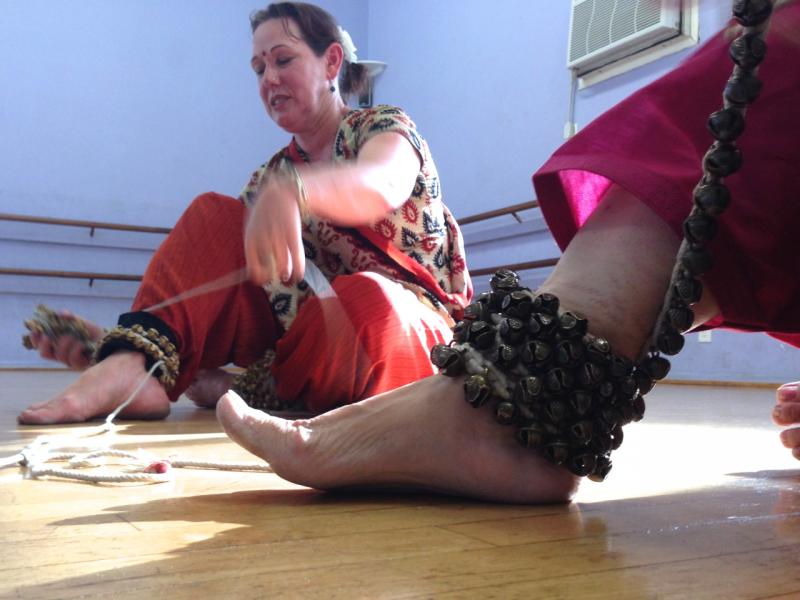Kathak Dance Puts Hinduism And Islam In The Same Circle

A Kathak dancer of 22 years, Moraga has come from San Francisco to teach dance disciples the rhythmic moves that will allow them to step in line with India’s cultural history.
“Kathak is a perfect fusion,” Moraga says to a slew of young dancers, ranging in age from six to mid-20s. “It’s not a confusion.”
The religious makeup of the South Asian community in the U.S. is much more varied than it is in India, with about half of Indian Americans identifying as Hindu and a tenth saying they are Muslim, according to the Pew Research Center on Religion & Public Life. As the only Indian classic dance to draw from both Hindu and Islamic influences, Kathak stages an opportunity to blend cultures, regardless of religious differences. But Kathak dancers and scholars aren’t as in step with each other on whether Kathak should be used to bridge gaps between the two communities.
Sekhar Kamapuram brought his two daughters, 14-year-old Rayna and 12-year-old Varna, to the Sherman Oaks workshop so they could learn more about the dance they’ve been studying for the past three years. He says the dance has become an important tool in connecting them back to their heritage and homeland, thousands of miles away.
“They can relate to people of similar cultural backgrounds,” he says. “I think they become better people and understand better. And they can relate back to their roots.”
Along with most of the families in attendance, Kamapuram and his daughters are Hindu. He thinks Kathak’s ability to absorb different cultural and religious influences mirrors India’s plethora of religions.
“There’s always been religious influence in India,” he says. “I grew up there for 25 years so we come across all the religions. It’s a part of growing up, that you get familiarized with it.”
But that religious diversity has also led to an escalation in conflict in recent years. Since the 2002 Gujarat riots that officially left 790 Muslims and 254 Hindus dead, there has been increased tension between these two religions. One Kathak dancer, Rani Khanam, says she is the first Muslim Kathak dancer to incorporate Sufiana verses into her performance. Sufism is a branch of Islam that emphasizes mystical experience.
But Moraga and fellow Kathak dancer Uma Dogra say Khana’s claim isn’t as groundbreaking as it might seem.
“You have to be careful with that because Kathak is an oral tradition that goes back hundreds of years,” Moraga says, pointing to the Mughal empire as using both Muslim and Hindu dancers in its courts.
Moraga and Dogra also say that the focus of Kathak should be on the art form and less about its contextual power in today’s societal issues.
“When the dancer goes on stage, they are not portraying Hinduism or Islam, this thing or that thing,” says Dogra. “It’s an expression of your own life, your own thinking, your own wisdom.”
Margaret Walker, director of the School of Music at Queen’s University in Ontario, Canada, disagrees. Having deconstructed the history of the classical dance, Walker argues that Kathak is a 20th-century revival dance form that draws from a variety of sources, including Hinduism and Islam. She says that because the dance is suited for innovations, it is primed to be a means to enact social change.
“Performing arts need to speak to today's issues, and there's no reason they cannot do so through ‘classical’ choreographic vocabulary,” Walker says. “A Kathak piece that address communalism, like a piece that addresses poverty or gender inequities, could still be a great work of classical art. Why not?”
As the hour-long workshop ends, Moraga is swarmed with questions, seeking advice on what Kathak discipline to follow or how to join a professional company. But when asked about her current spiritual beliefs, Moraga – who was raised Protestant – waves it off.
“My religion is dance,” she says.
Reach Editor-at-Large Melissah Yang here. Follow her on Twitter @MelissahYang.



